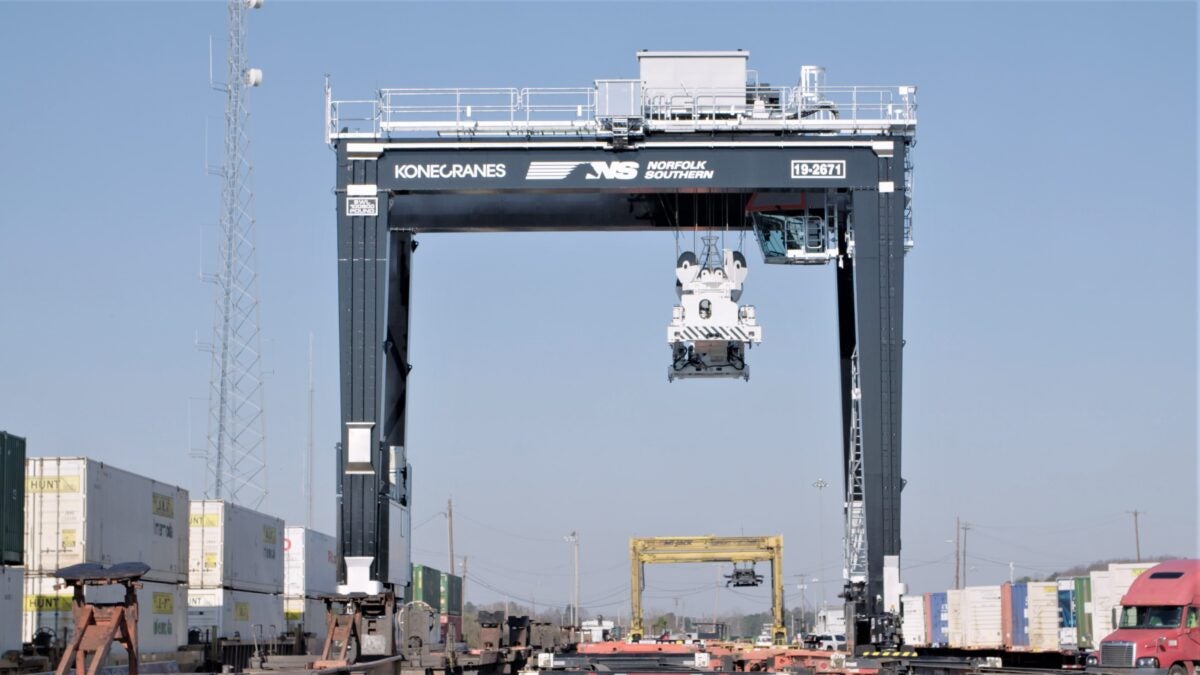Eastern U.S. railroads CSX and Norfolk Southern are involved in two projects aimed at bolstering intermodal infrastructure and assets in the South and Midwest.
Inland container transfer facility planned to support Port of Mobile
The Alabama Port Authority has approved a $2.04 million purchase of 272 acres in Montgomery for construction of an inland container intermodal transfer facility that will support container traffic from the Port of Mobile.
The port says extending intermodal rail service from the port will support Alabama’s manufacturing, retail, distribution and agribusiness sectors.
CSX will serve the terminal, and the goal is to have regularly scheduled rail service between the port and inland customers. CSX (NASDAQ: CSX) plans to provide up to $12.5 million for infrastructure improvements in the facility, according to the Alabama Port Authority.
“This is another great example of how successful partnerships can help foster creative solutions for CSX customers,” said Tom Tisa, head of business development for CSX, in a Friday release. The investment in the Montgomery facility comes as CSX is also investing $6 million toward rail spur infrastructure at the company’s south Alabama megasite northeast of Mobile. “These infrastructure investments will provide the opportunity to grow our business in the region,” Tisa said.
The project, first mentioned in the port authority’s 2001 master plan, will be constructed in phases. The first phase, which could cost $54 million and take up to two years to construct, would connect inland Alabama shippers to the intermodal container transfer facility at Mobile. That facility is next to the marine terminal and has access to five Class I railroads.
The end goal is to facilitate inland shippers’ access to the Port of Mobile and the Gulf Coast through the Montgomery facility. The distance between Montgomery and Mobile is roughly 170 miles via Interstate 65.
“This project will provide our shippers cost-competitive transportation services to and from one of the nation’s fastest growth containerized cargo gateways,” said John C. Driscoll, director and CEO for the Alabama Port Authority.
The Montgomery facility will complement Mobile’s existing intermodal assets, which include a marine terminal that opened in late 2008 and an intermodal rail facility that opened in 2016 and provides intermodal service to Memphis, Tennessee, as well as Chicago and Canada.
NS installs 5 hybrid cranes at intermodal terminals in Chicago and Atlanta

Norfolk Southern has installed five new diesel-electric hybrid overhead gantry cranes at the Landers terminal in Chicago and the Inman terminal in Atlanta as part of a broader effort to increase fuel efficiency and reduce emissions in NS’ terminal operations.
The cranes are 60 feet high and can work over one or two rail tracks along with two truck lanes at the rail yards. Computer tracking enables crane operators to locate a container and maneuver the lifting machinery to move containers to and from rail and truck, NS (NYSE: NSC) said.
Five hybrid Konecranes, which utilize power generated by a battery and diesel generator, were introduced at the 47th Street intermodal facility in Chicago in 2021. NS hopes to convert the remaining 58 traditional overhead gantry cranes across its 22-state network to hybrid power or fully electric power over the next decade. Doing so could result in approximately 30 million gallons of fuel savings and over 300,000 metric tons of emission reductions over the next 20 years following the replacement of all the old cranes.
“We initially sought hybrid-powered cranes for their fuel efficiency, and, in turn we experienced not only sustainability gains, but found they are far more reliable as well,” said Jeff Heller, NS vice president of intermodal and automotive, in a release. “As our team conducted a technology audit to explore replacement opportunities, we found the high-tech hybrids also minimize the need for repairs and require less down time than traditional cranes. This helps minimize delays related to cranes being down, and in turn improves reliability for our customers.”
Subscribe to FreightWaves’ e-newsletters and get the latest insights on freight right in your inbox.
Click here for more FreightWaves articles by Joanna Marsh.







